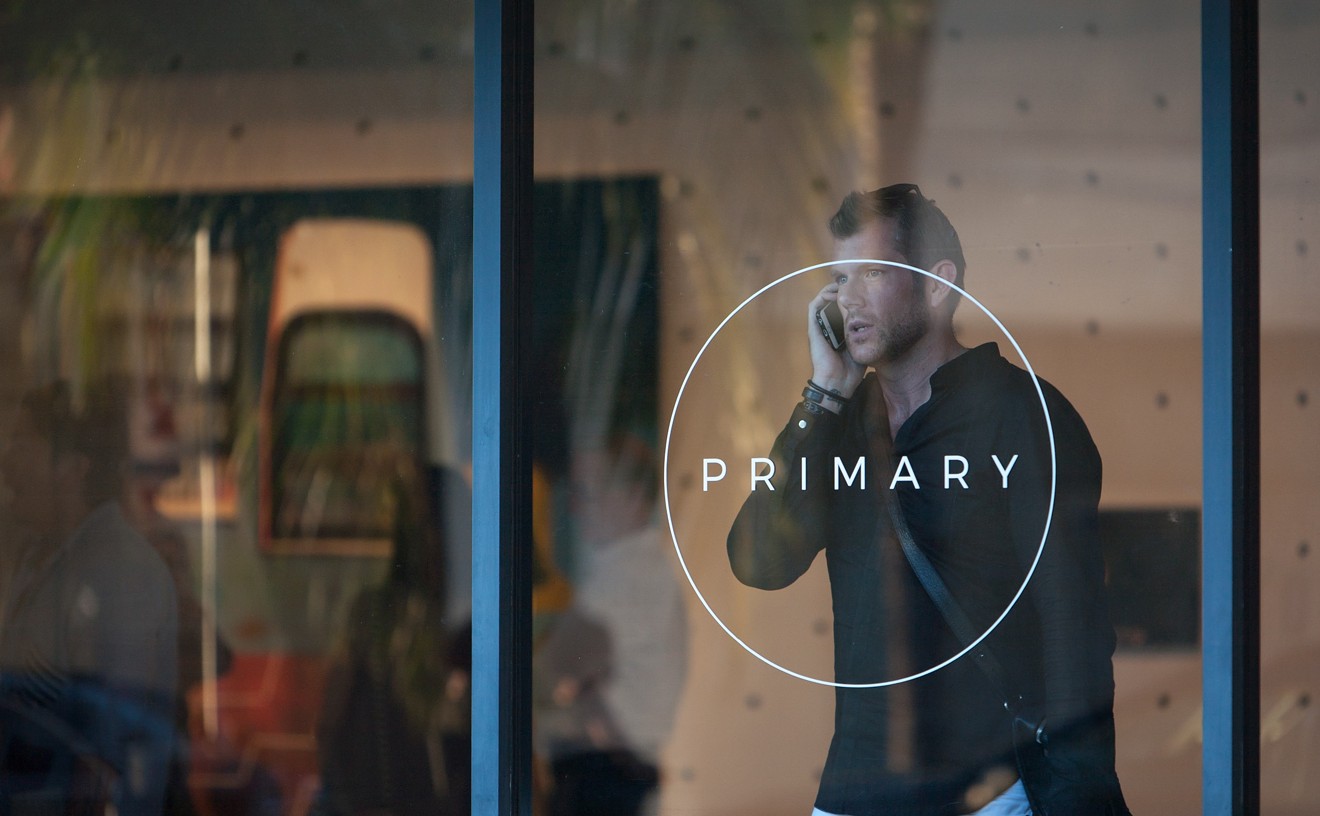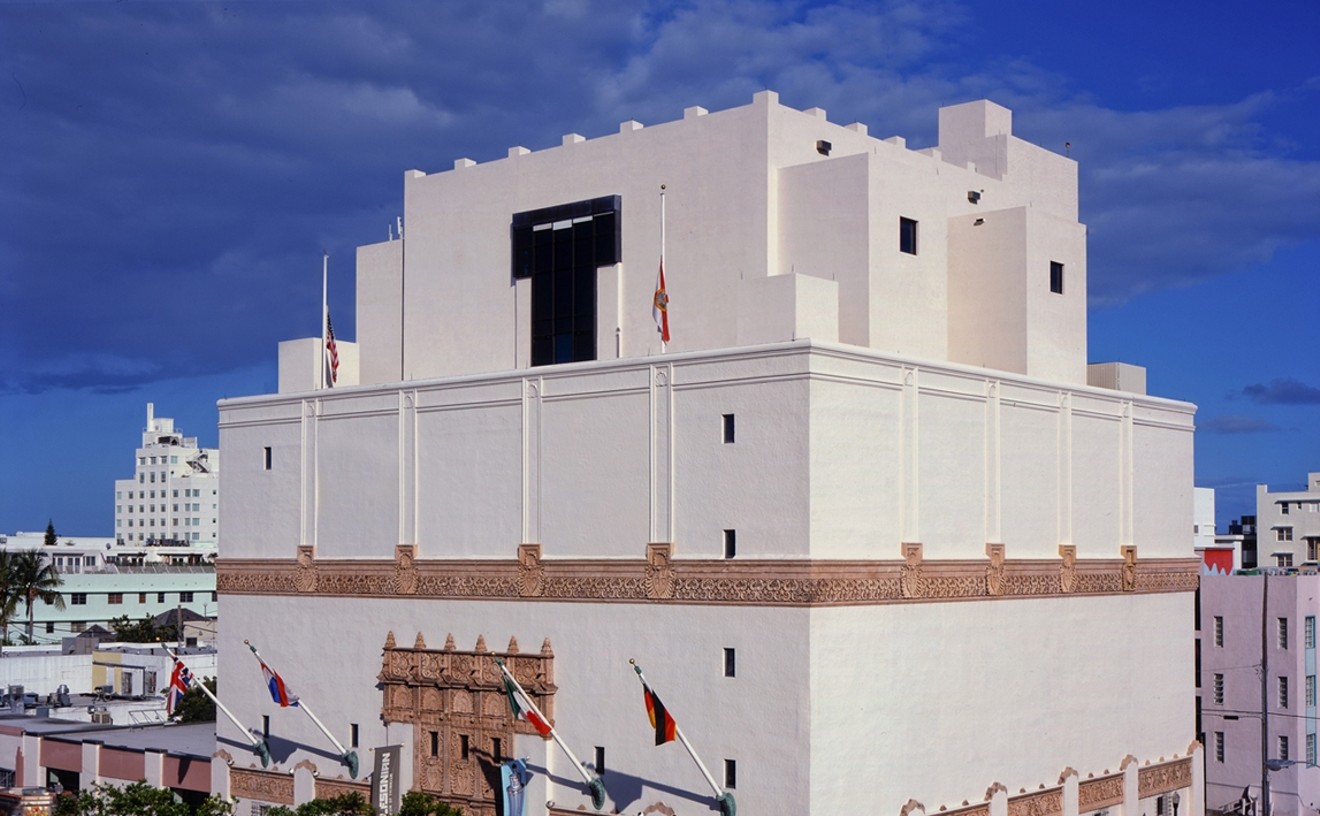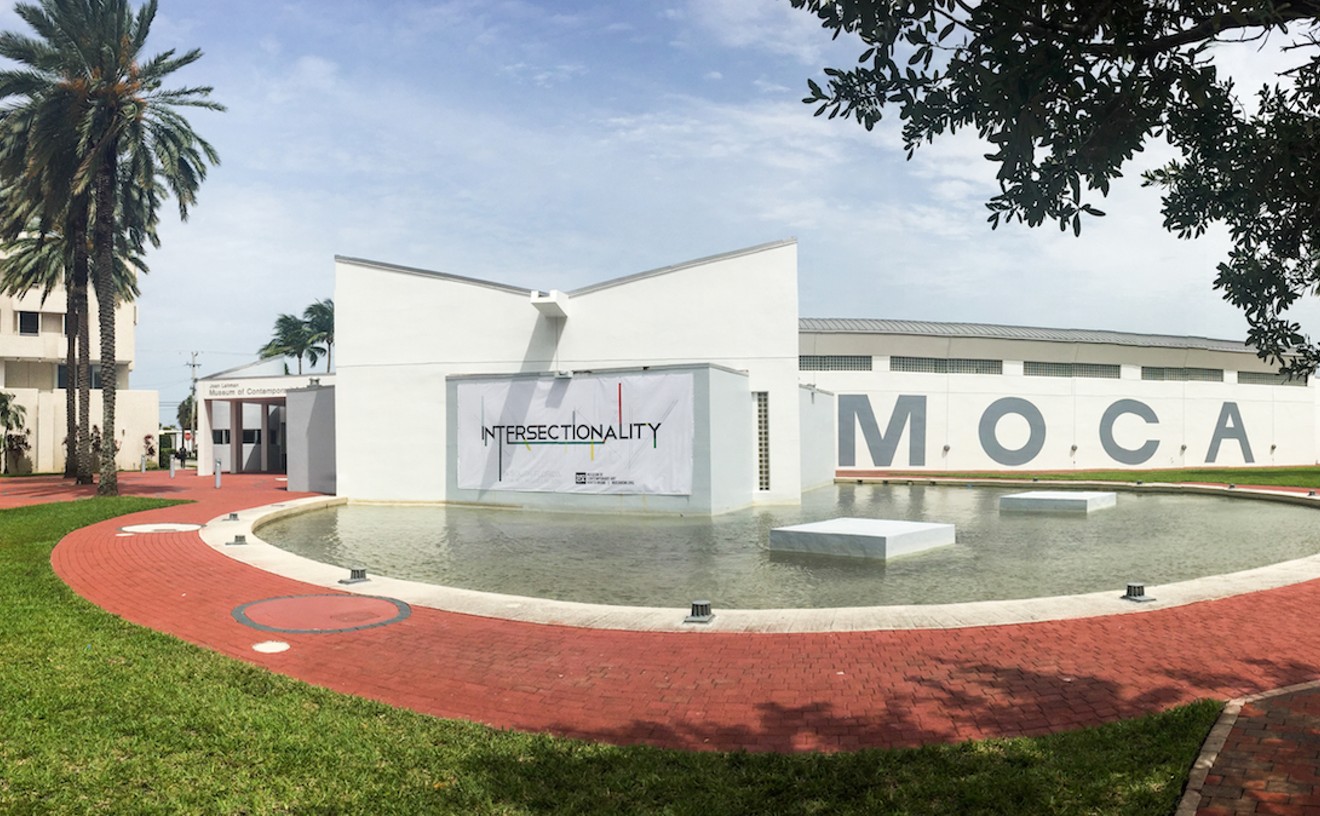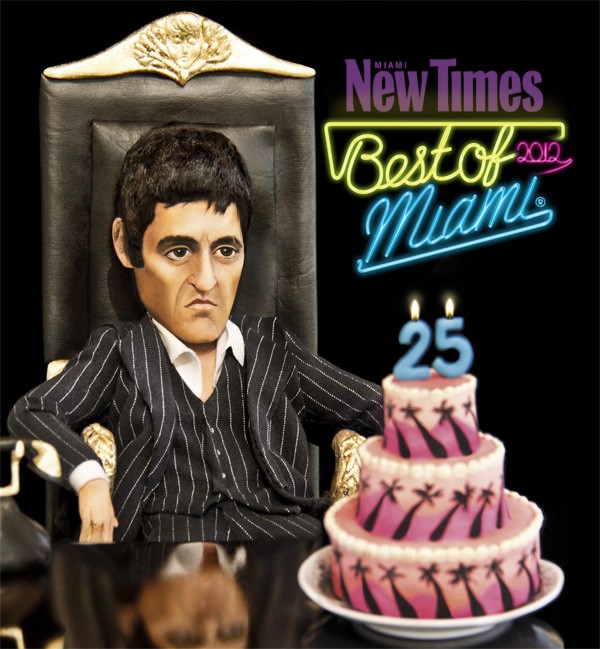Main Street Players president Clara Lyzniak has been involved with the small troupe since 1998 and has served in almost every capacity there is at a theater company. But it was her uproarious scene-stealing turn as Zoila in the group's production of Living Out that proves she needs to be on stage more often. Lyzniak's take on the modern Hispanic nanny — heavy accent, big attitude, and oozing with chutzpah — brought hysterical laughter to an otherwise somber and serious play. It was a bit role that served as the story's comic relief, but Lyzniak, who in real life speaks perfect English without a hint of an accent, absolutely crushed it as Zoila. She hilariously massacred the English language and delivered pure, unbridled sass when taking direction from her Anglo employers. The role could have easily been mailed in with a stereotypical portrayal, but Lyzniak knew when to dial it down and when to bring it full bore. The result was a show-stopping performance every time she appeared onstage. Zoila was Lyzniak's first major role for the troupe, taking her away from behind-the-scenes and administrative duties, and we hope to see more of her in front of the audience.
Best Supporting Actress
Clara Lyzniak
- 6812 Main St., Miami Lakes, 33014 Map
- 305-558-3737
- mainstreetplayers.com
Best Theater for Drama
Main Street Players
Putting on engaging stage dramas can be daunting for any theater troupe. Yet the diminutive and diverse Main Street Players is always up to the task. Sure, there are bigger troupes that draw larger crowds and cast more accomplished actors for their respective productions. But Main Street Players is special because its commitment is to stories and to telling those stories with hungry young actors and a stage crew ready to expertly build a small apartment or a makeshift park at a moment's notice. The group performs in an amiable black-box theater nestled across from a multiplex and a Johnny Rockets. And it knows how to pack a punch. Even with its limited budget and small working space, MSP understands the play is the thing, and the troupe's commitment resonates in each production. Main Street Players has had many incarnations over the years since opening in 1974 as the Miami Lakes Players Guild, often moving from venue to venue and putting on two or three productions a year wherever it could until the City of Miami Lakes offered the current space. It's a small, talented, and versatile group that doesn't mind taking on challenging plays such as the controversial Extremities, the deeply layered Living Out, and the provocative Closer. Plays with such driving and stimulating narratives would normally be shortchanged and curtailed by the quirks and limitations of a small local theater troupe working on a tiny stage, but Main Street Players is the little theater group that could, and it knows exactly how to give audiences a rich and rewarding theater experience.
- 6812 Main St., Miami Lakes, 33014 Map
- 305-558-3737
- mainstreetplayers.com
Best Theater Company
The M Ensemble
Formed in 1971 at the University of Miami by the late T.G. Cooper, the M Ensemble has always had the goal of promoting African-American culture and experiences through the performing arts. Beginning at the Edison Community Center and going through many incarnations, with plays performed in schools, churches, and libraries, the troupe has made a deep and lasting mark in the community. With an unmatched, ambitious fervor to expand the boundaries of theater and expose Miami to talented and prolific African-American playwrights such as August Wilson and Djanet Sears, the M Ensemble has never been afraid of taking on profound and subversive plays and turning them into lively and engaging productions on a shoestring budget. With recent productions such as the complex and moving Radio Golf, a play that delved into the complicated parameters of embracing the promise of the present while sacrificing the past, and Harlem Duet, a stirring modern slant on Shakespeare's Othello, the M Ensemble continues to stretch itself and, in doing so, remains not only Miami's premier African-American theater company but also one that's unmatched by others.
Best Drag Queen
TP Lords
TP Lords can serve up just about anything. One night she's offering traditional glam girl and the next she's on some avant-garde Leigh Bowery-type trip. Hell, she can even do Beyoncé realness with the best of them and then go backstage and emerge as some sort of neon creature who looks like a cross between a club kid and a space empress from Planet T. TP has drag versatility down. Otherwise known as Alex Velez, TP is the mother of the House of Lords when she's not performing multiple times a week at places such as Twist, Discotekka, Sugar, and the Palace.
Best Reality Contestant
Latrice Royale, RuPaul's Drag Race
Have you ever been moved to tears while watching a 300-pound ex-felon in a wig lip-sync Aretha Franklin's "Natural Woman" to her fake baby bump? If not, you clearly haven't been watching the fourth season of RuPaul's Drag Race, featuring breakout star Latrice Royale. She fell just short of winning the crown, but she certainly won our hearts. Before being cast on the Logo network's reality show, Royale — AKA Timothy Wilcots — pounded the pavement outside the Palace in South Beach after turning her life around following an 18-month prison sentence on drug charges. In addition to the harrowing backstory, Royale had all the makings of a reality TV phenomenon with her own catch phrases (ask her about the five G's), a signature laugh, a warm and caring personality, and a remarkable stage presence. In her own words, "She is chunky yet funky. The bold and the beautiful. She is Latrice Royale."
Best Public Art
Brandon Opalka's Semitruck

As a street artist, Brandon Opalka has been using Miami's façades as his canvas since moving to town in 1996. Without the urban sprawl, Opalka would have no medium, but paradoxically, it's the natural world that inspires him. His latest massive mural, Changing the Way We Breathe, completed in late 2011, reminds us to take care of our silent organic friends and highlights the sacrifices that come with modern living. Brilliantly colored and intricately detailed, this 115-foot masterpiece has a prophetic and ghostly quality, as if telling us to care for our planet as a means of caring for ourselves. Engulfing the length of a wall, the painting features a swirly, almost trippy semitruck belching fire and smoke while toting a chopped-down redwood on its way to the mill. The background is just as colorful and chaotic, meant to give the impression of an "apocalyptic world without trees," according to Opalka. It's inspiring for its attention to detail and breathtaking to behold, a gorgeous addition to Wynwood's colorful neighborhood. For Opalka, whose work is featured at Wynwood Walls and the Dorsch Gallery, it's also a triumph of nature as street art.
- 5900 NW Second Ave., Miami, 33127 Map
- 305-576-1278
- emersondorsch.com
Best Artists
The TM Sisters
Distilling a Miami aesthetic down to a distinct essence is an Olympian undertaking. Our city beats with a rhythm that's electric and shape shifting. Languages and cultures collide in a Babylonian tapestry. Artists from Iceland to Chile call the Magic City their home. But then again, for Monica and Tasha Lopez De Victoria, who for the past decade have been collaborating as the TM Sisters, making the protean seem simple has been a calling card since they burst onto the scene. They gained international attention in 2005 with their video "Superpowers," featuring a cast of dozens of Miami's artists harnessing a bolt of homegrown energy and pitching it off to each other against a dazzling geometric blue and pink background reminiscent of a vibrant videogame. It went on to be featured in an exhibit that traveled across Europe. Not only did the video capture the metamorphosis underway on our art scene at the time, but also many of the colleagues with whom the TM Sisters collaborated on the project have gone on to represent the 305 on the international scene. The insatiably curious siblings are no strangers to experimenting with media. Their works oscillate from video to collage and from sprawling, interactive installations to ambitious performance pieces that reflect their love of South Florida with a unique techno-tropical vibe. Their "Whirl Crash Go!" production at Locust Projects in 2009 combined synchronized swimming and spandex-clad roller skaters with animated video projections, along with a musical score composed by Otto Von Schirach and costumes designed by Karelle Levy of Krelwear. The pulsating event transported viewers to a polychromatic universe of epic scope, nonstop action, and intense light and sound. Likewise, their multimedia opus "Shimmer," at the Adrienne Arsht Center, presented as part of Miami Made Festival 2012, scintillated the senses with their trademark multimedia experimentation while delivering a vision of Miami's clash of cultures, saturated neon lights, and a prismatic lightning bolt of life uniquely their own.
Best Art Gallery
Primary Projects

Art with an attitude and an uncompromising eye for gritty street swagger distinguishes Primary Projects from the rest of Miami's ever-growing pack of galleries and artist-run spaces. Powered by the triumvirate of BooksIIII Bischof, Typoe, and Chris Oh, this multidisciplinary stage for bleeding-edge work — oddly located in a swank Design District enclave of restaurants and designer shops — has hosted a sizzling string of solo and group shows in the past year that have been among the most controversial and talked about of the 2011 season. Some of the most memorable works included Edouard Nardon's fearsome yet oddly beautiful collection of jailhouse shivs; Scott Shannon's gorgeous Crayola drawing of a swastika floral bouquet; Autumn Casey's petrified, rotten-apple bongs; and George Sanchez-Calderon's bronze crack-pipe sculpture. Those tired of Wynwood's increasingly commercial scene flocked to Primary for a taste of art that fluctuated between the sublime and sinister, from Kenton Parker's fully functioning Taco Shop to Andrew Nigon's surreal Bullwinkle moose head with antlers festooned by what appeared to be rainbow-hued used-car-lot flags. And who can forget Jessy Nite's Hell Here, a brazen one-night stand in which she recruited a stripper to deliver private lap dances to viewers willing to part with their greenbacks. When it came to Art Basel headline grabs, no local space commanded as much attention last December as Primary, which staged Miru Kim's 104-hour performance I Like Pigs and Pigs Like Me, in which the Korean-American artist wallowed nude with two live hogs in the gallery's storefront window, earning tons of international media attention while stirring controversy with animal advocates.
- 7410 NW Miami Ct., Miami, 33150 Map
- 954-296-1675
- thisisprimary.com
Best Museum
The Wolfsonian-FIU

Let's face it: Miami is not always seen as the classiest town. Many outsiders still think our idea of art is a stripper's Betty Boop tramp stamp. But if Art Basel and the explosion of Wynwood aren't enough to silence the critics, try taking them to one of the most unique and well curated museums in any city. The Wolfsonian, which was born from a collection belonging to millionaire Mitchell "Micky" Wolfson Jr., is packed with artifacts of modern design, organized in a way that is somewhat random yet cohesive and themed. Creepy German World War I propaganda posters are displayed beside a 1920s zeppelin model, which hangs not too far from an art deco hair dryer. It's like a trip to your uncle's attic, if your uncle collected seminal design work and not foam beer koozies. Spend a couple of hours in this beacon of culture — admission is $7 for adults, with Friday nights free — and then feel free to return to a more stereotypical life of G-strings and beer bongs. Open daily noon to 6 p.m. and Friday noon to 9 p.m.; closed Wednesdays. Seniors, students with valid ID, and children ages 6 to 12 pay $5; Wolfsonian members, children under 6, and students, faculty, and staff of the State University System of Florida are admitted free.
- 1001 Washington Ave., Miami Beach, 33139 Map
- 305-531-1001
- www.wolfsonian.org
Best Art Museum
Museum of Contemporary Art

Celebrating its 15th anniversary, the Museum of Contemporary Art has always had a mission to inspire cultural consciousness among local audiences — the younger the better. Museum director Bonnie Clearwater is a firm believer in arts education and has expanded MOCA's outreach programs to include a museum-studies partnership with Miami-Dade County Public Schools, directly affecting more than 7,000 students in kindergarten through 12th grade. The museum also operates an after-school junior docent program in which students guide peers on tours of exhibits and take journalism workshops to learn to write creatively about art. But Clearwater has also made a name for herself with an eye for discovering fresh talent and giving many rising Miami artists their first museum shows. To date, she has screened the works of more than 200 locals in MOCA's celebrated festival, Optic Nerve. Also, the museum typically draws young families to enjoy free jazz concerts on its lawn every month and consistently mounts some of the most provocative and fresh exhibits during each season. Last year's blockbusters included Mark Handforth's "Rolling Stop," featuring monumental works too large for the museum walls to contain and were exhibited throughout the community, from Griffing Park to Wynwood. Ryan Trecartin's epic series of videos filmed locally, "Any Ever," was a crowd magnet, and MOCA's three-day symposium New Methods, focusing on cutting-edge artistic practices and educational exchange, drew cultural leaders from six countries. It comes as no surprise that Clearwater receives regular letters from former student interns saying that working at MOCA inspired them to pursue art degrees.
- 770 NE 125th St., North Miami, 33161 Map
- 305-893-6211
- mocanomi.org





